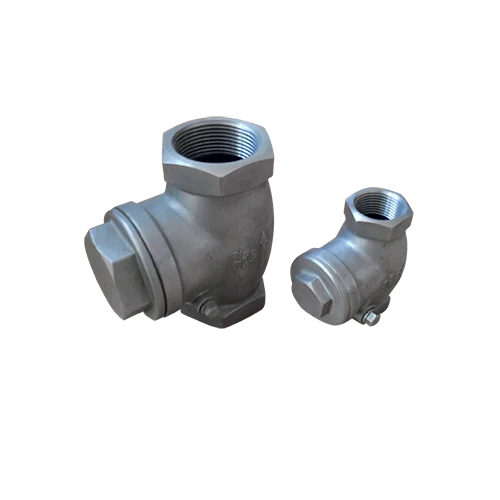Mobile:+86-311-808-126-83
Email:info@ydcastings.com
axial flow impeller
The Significance of Axial Flow Impellers in Modern Engineering
Axial flow impellers are critical components in various engineering applications, especially in fluid dynamics, chemical processes, and mechanical systems. They function primarily by moving fluids along the axis of the impeller, which contrasts sharply with centrifugal impellers that move fluids outward from the center. The design and function of axial flow impellers make them integral to a wide range of industries, including water treatment, marine propulsion, and HVAC systems.
Design and Functionality
At the heart of an axial flow impeller's success lies its unique design. The impeller typically consists of a series of blades that are arranged around a central hub. These blades create a low-pressure area in front of them, drawing fluid through the impeller while simultaneously directing the flow in a straight path along the impeller's shaft. The geometry of the blades—such as the angle of attack and blade width—plays a significant role in determining the impeller’s efficiency, flow rate, and head.
The operational principle is straightforward as the impeller rotates, it imparts kinetic energy to the fluid. This energy transfer causes the fluid to accelerate along the axial direction, making axial flow impellers particularly effective for applications that require high flow rates with relatively low pressure rises. This characteristic is critical in cooling systems, where large volumes of air or liquid must be moved effectively.
Applications of Axial Flow Impellers
Axial flow impellers find their primary applications in water and wastewater treatment plants, where they are used for pumping and mixing fluids. Their ability to handle large volumes of liquid with minimal energy consumption makes them ideal for these environments. Moreover, in marine applications, axial flow propellers are essential for the propulsion of ships and submarines, providing efficient and reliable movement through water.
Another significant area where axial flow impellers are utilized is in power generation, particularly in cooling towers and heat exchangers. Here, they help circulate water to remove excess heat from various processes, ensuring optimal performance and safety in power plants. Furthermore, their role in HVAC systems cannot be understated. Axial fans, which are a type of axial flow impeller, help circulate air throughout buildings, providing essential climate control and ventilation.
axial flow impeller

Efficiency and Innovations
The efficiency of axial flow impellers can be enhanced through various engineering innovations. Computational Fluid Dynamics (CFD) simulations allow engineers to model the fluid flow around the impeller, optimizing blade design and positioning. Advanced materials and manufacturing techniques, such as 3D printing, also enable the creation of lightweight yet durable impellers that can withstand harsh operational conditions.
Additionally, modern axial flow impellers are being integrated with automated control systems that monitor performance and adjust operational parameters in real-time, leading to increased efficiency and reduced energy consumption. Smart technologies and IoT integration help in predictive maintenance, identifying potential issues before they result in costly downtimes.
Future Trends
As industries continue to emphasize sustainability and energy efficiency, the importance of axial flow impellers is only expected to grow. Innovations in their design and functionality will likely focus on maximizing flow efficiency while minimizing energy loss. Research into biomimicry—design inspired by nature—could lead to the development of more efficient impeller designs.
The implementation of axial flow impellers in renewable energy applications, such as wind and tidal energy systems, is also on the rise. By optimizing the flow characteristics of these impellers, engineers can harness renewable resources more effectively, contributing to a more sustainable energy infrastructure.
Conclusion
In conclusion, axial flow impellers represent a vital technology in fluid mechanics and engineering. Their unique design and functionality allow for efficient fluid transport across a variety of applications, from industrial processes to environmental management. As technological advancements continue to evolve, the efficiency and effectiveness of axial flow impellers will undoubtedly improve, supporting the ever-increasing demand for sustainable and efficient engineering solutions. The future looks promising for this essential component, with continuous innovations poised to further enhance their role in modern engineering.
-
Why Should You Invest in Superior Pump Castings for Your Equipment?NewsJun.09,2025
-
Unlock Performance Potential with Stainless Impellers and Aluminum End CapsNewsJun.09,2025
-
Revolutionize Your Machinery with Superior Cast Iron and Aluminum ComponentsNewsJun.09,2025
-
Revolutionize Fluid Dynamics with Premium Pump ComponentsNewsJun.09,2025
-
Optimizing Industrial Systems with Essential Valve ComponentsNewsJun.09,2025
-
Elevate Grid Efficiency with High-Precision Power CastingsNewsJun.09,2025











